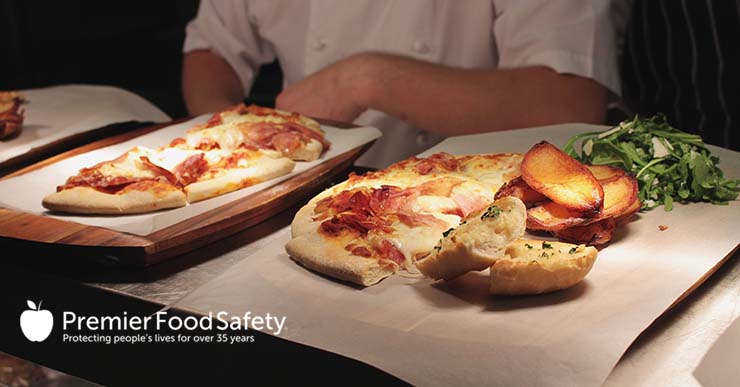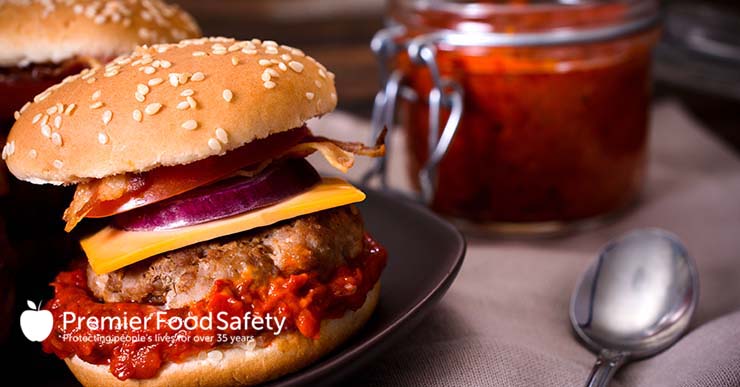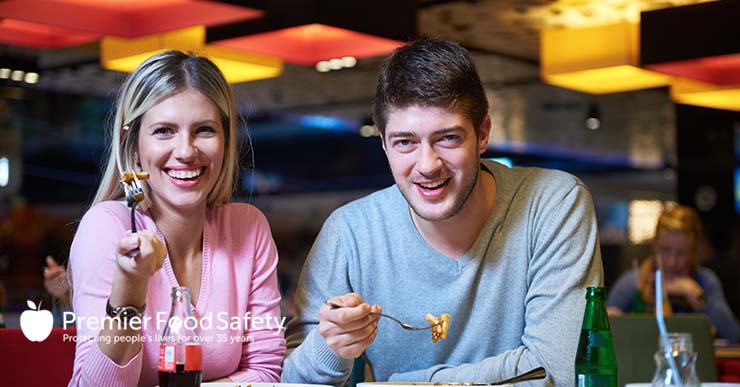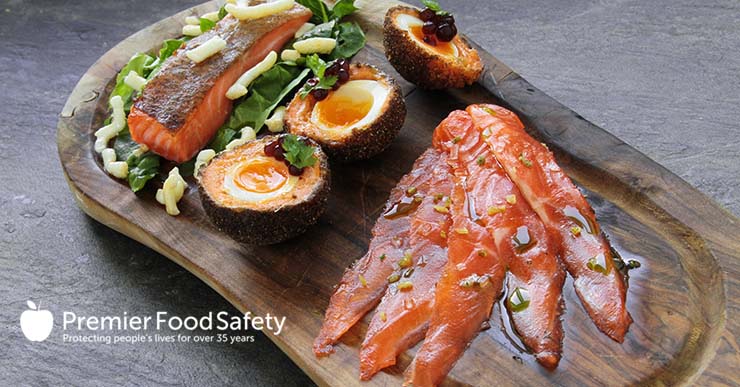Monthly Archives: February 2017
Published February 21, 2017
How restaurants can attract Gen Z customers
Restaurants have traditionally been a means to an end. But due to mountains of options, they’ve surpassed the basic utility of satiating hunger, and have created new need and want states. This phenomenon is especially prevalent among Generation Z. For them, brands have evolved into cultural and social statements. Translation: Restaurants are no longer here […]
Read More: https://premierfoodsafety.com/blog/how-restaurants-can-attract-gen-z-customers/
Published
Gluten-free diners’ new mantra: trust, but verify
Nima, a new device that could be a life saver for those afflicted with Celiac. This new device allows the user to place a sample of food into the test machine and determine whether or not the product has gluten in it. Nina has already tested certain foods labeled gluten free to find that it […]
Read More: https://premierfoodsafety.com/blog/gluten-free-diners-new-mantra-trust-but-verify/
Published February 20, 2017
What Restaurants Can Learn from Starbucks Mobile Stumble
The Starbucks mobile ordering and pay app was a great idea but is causing income customers to leave the overcrowded lines without making a purchase. It is likely other restaurants will also stumble while adapting this technology. The biggest problem with this technology is you must have enough staff that is well trained and efficient […]
Read More: https://premierfoodsafety.com/blog/what-restaurants-can-learn-from-starbucks-mobile-stumble/
Published
Self-Service Kiosk Software from Oracle Hospitality
Self service is becoming more and more popular in stores and other places. It saves companies money because they don’t have to hire as many people and it also makes things run more quickly. This talks about a software used in self service kiosks. It explains the software, what it does and how well it […]
Read More: https://premierfoodsafety.com/blog/self-service-kiosk-software-from-oracle-hospitality/
Published
6 lessons foodservice managers learned from their worst bosses
There are many lessons that food service managers have learned from their worst bosses. One lesson is never to hire someone that always says yes. Those people do not add much, if they are always agreeing with everyone. You also must tackle issues head on. No sweeping anything under the rug. Key Takeaways: When a […]
Read More: https://premierfoodsafety.com/blog/6-lessons-foodservice-managers-learned-from-their-worst-bosses/
Published February 17, 2017
Study: Millennials to Continue Shaping the Food Industry
It looks as though millennials are shaping the food industry. It turned out from the studies that people aged 18-34 were influenced by the food culture around them. That will no doubt shape the food industry for years to come. A lot of young people love to explore culture through food. Key Takeaways: To craft […]
Read More: https://premierfoodsafety.com/blog/study-millennials-to-continue-shaping-the-food-industry/
Published
Flat forecast for restaurant wine in 2017
A major wine industry lender predicts restaurant wine sales will be flat this year, but that doesn’t mean alcoholic beverage revenue will suffer. Patrons will still buy plenty of wine—but only after starting their evening with a craft beer or cocktail. A change in consumer drinking patterns is one reason for this no-growth scenario, but […]
Read More: https://premierfoodsafety.com/blog/flat-forecast-for-restaurant-wine-in-2017/
Published
Firehouse Offering Franchise Incentives for Northeast Growth
Firehouse Subs is aggressively pursuing Northeast development by offering a development incentive to prospective, qualified franchisees as a part of its continued effort for national growth and expansion. This fast casual brand continues to grow its business with more than 1,030 restaurants in 44 states, Puerto Rico, and Canada, and is recognized as one of […]
Read More: https://premierfoodsafety.com/blog/firehouse-offering-franchise-incentives-for-northeast-growth/
Published
5 Steps to Making Your Restaurant More Efficient
When operating a restaurant, it is critical to make sure that all the operating parameters, processes, and procedures are optimally design and in alignment because efficiency is crucial to the success of a restaurant. Here are some tips on how to drive a higher level of efficiency in full service restaurants that can help drive […]
Read More: https://premierfoodsafety.com/blog/5-steps-to-making-your-restaurant-more-efficient/
Published February 16, 2017
How Amazon is disrupting foodservice
Amazon is a giant, the one time online bookstore has turned into an absolute powerhouse. It does not seem like there is nothing they can’t do, and now they are looking to get into food. They are looking to get into a lot of different food ventures, maybe even change the game. Key Takeaways: A […]
Read More: https://premierfoodsafety.com/blog/how-amazon-is-disrupting-foodservice/
ARCHIVES
- Commentary
- Want to Optimize Your Menuboards? Try Analytics
- One Coffee Shop’s Mission-Focused Approach to Marketing
- Why the Future of Sandwiches is Global
- Create a Stunning Look with Custom and Themed Table Tops
- Is Alcohol Worth the Price for Fast Casuals?
- Food Handler
- How to Compliment Guests
- Tips for balancing your job and your relationship
- More annoying customers that drive you crazy
- The tip of a lifetime
- Customers are annoying
- Food Manager
- Online ordering – the future is now!
- Improve assistant manager skills to boost business
- How to Manage and Control Food Costs
- Sustainable food is good for business (and the environment!)
- What’s the Deal with Baby Boomers?
- News
- Jimmy John Liautaud to Receive Horatio Alger Award
- Loyalogy Announces New 2018 Rewards Program Research Study with Customized Options for Restaurant Companies
- Pita Pit’s CEO Talks Fresh Menu, Future Changes
- Leaders Establish Foodservice Consulting Firm
- CoreLife Eatery Announces New Franchising Opportunities
- Quiz
- Trending











